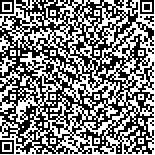孙莉敏,杨浩,孙长慧,等.运动想象联合常规康复促进脑卒中患者上肢运动功能恢复的fMRI研究[J].中华物理医学与康复杂志,2020,42(6):493-499
扫码阅读全文

|
| 运动想象联合常规康复促进脑卒中患者上肢运动功能恢复的fMRI研究 |
|
| |
| DOI:10.3760/cma.j.issn.0254-1424.2020.06.003 |
| 中文关键词: 运动想象 脑卒中 静息态功能磁共振 有效连接 运动功能 |
| 英文关键词: Motor imagery Stroke Magnetic resonance imaging Connectivity Motor function |
| 基金项目:国家自然科学基金面上项目(81974356,81471651);国家自然科学青年基金项目(81401859);上海市卫生和计划生育委员会资助项目(201440634);上海市闸北区卫生局资助项目(面上2014MS06) |
|
| 摘要点击次数: 6034 |
| 全文下载次数: 6043 |
| 中文摘要: |
| 目的 采用基于静息态功能磁共振(fMRI)的Granger因果分析方法研究运动想象(MIT)联合常规康复促进脑卒中患者上肢功能恢复的作用机制。 方法 招募14例脑卒中后偏瘫患者纳入MIT组,对其进行4周MIT治疗,每周治疗5 d,每天治疗30 min,并同时辅以常规康复及药物治疗。于治疗前、后采用Fugl-Meyer量表上肢部分(FMA-UE)及改良Barthel指数(MBI)对患者进行评估,并进行静息态fMRI扫描。本研究同期招募28例年龄、性别与MIT组匹配的健康人纳入健康对照组,并对其进行静息态fMRI扫描。采用Granger因果分析方法探讨患者经治疗后其损伤侧初级运动皮质(M1)与全脑间有效连接的变化情况,并与健康对照组进行比较。 结果 治疗后,MIT组患者FMA-UE评分由 (18.4±12.0)分提升至(33.4±15.4)分,MBI评分由(58.6±14.7)分提升至(78.2±14.8)分,差异均具有统计学意义(P<0.05)。治疗前,MIT组患者有效连接模式明显异于健康对照组,其损伤侧M1到双侧前额叶的有效连接异常增强,从损伤对侧M1、顶下小叶和小脑到损伤侧M1的有效连接则明显减弱。治疗后,MIT组有效连接模式趋近于健康对照组,且顶上小叶、顶下小叶、丘脑和梭状回等与运动想象相关脑区和损伤侧M1的有效连接显著增强。通过相关性分析发现,治疗前,患者损伤侧M1到损伤对侧小脑的有效连接与FMA-UE评分具有正相关性(R=0.601,P=0.023),损伤对侧额中回到损伤侧M1的有效连接与FMA-UE评分具有负相关性(R=-0.638,P=0.015)。 结论 MIT联合常规康复促进脑卒中患者上肢运动功能改善可能与有效连接模式重塑有关,如治疗后脑卒中患者运动想象相关脑区和损伤对侧小脑到损伤侧M1的有效连接增强,而损伤对侧额中回到损伤侧M1的有效连接代偿效应解除。 |
| 英文摘要: |
| Objective To explore the mechanism of motor imagery training (MIT) combined with conventional rehabilitation to promote the functional recovery of upper limbs in stroke survivors. To explore the brain network reorganization resulting when motor imagery training (MIT) is combined with conventional rehabilitation to promote the motor recovery of stroke survivors. Methods Fourteen hemiplegic patients were recruited as the MIT group. They underwent 4 weeks of MIT (30 min/day, 5 days/week) along with conventional rehabilitation treatment. The upper limb section of the Fugl-Meyer assessment (FMA-UE) and the modified Barthel Index (MBI) were used to assess all of the patients, and resting-state fMRI was performed before and after the treatment. Twenty-eight age- and sex-matched healthy subjects also received one-time resting-state fMRI scanning. Granger causal analysis was performed in the MIT group to calculate the changes in effective connection between the ipsilesional primary motor cortex and the whole brain before and after the treatment, and the results were compared with the healthy control group. Results After the treatment, the average FMA-UE and MBI of the MIT group had increased significantly. Before the intervention, the effective connection mode of the ipsilesional M1 area in the MIT group was significantly different from that of the healthy controls. The causal flow from the ipsilesional M1 area to the bilateral prefrontal cortex had increased abnormally and the causal flow from the contralesional primary motor cortex, the inferior parietal lobule and the cerebellum to the ipsilesional M1 area had decreased significantly. After the treatment, the effective connection pattern of the stroke survivors was nearly normal, and the causal influence from contralesional motor imagery-related brain areas (the superior parietal lobule, inferior parietal lobule, thalamus and the fusiform gyrus) to the ipsilesional M1 area was enhanced. Effective connection from the ipsilesional M1 area to the contralesional cerebellum before the intervention was positively correlated with the improvement in FMA-UE scores, and the effective connection from the contralesional middle frontal gyrus to the ipsilesional M1 area was correlated negatively. Conclusions The neural mechanism of MIT's effectiveness when it is combined with conventional rehabilitation might be related to the reorganization of effective connections. That would include enhanced causal flow between motor imagery-related brain areas and the contralesional cerebellum and ipsilesional M1 area. Down-regulation of the effective connection from the contralesional middle frontal gyrus to the ipsilesional M1 area also occurs. |
|
查看全文
查看/发表评论 下载PDF阅读器 |
| 关闭 |